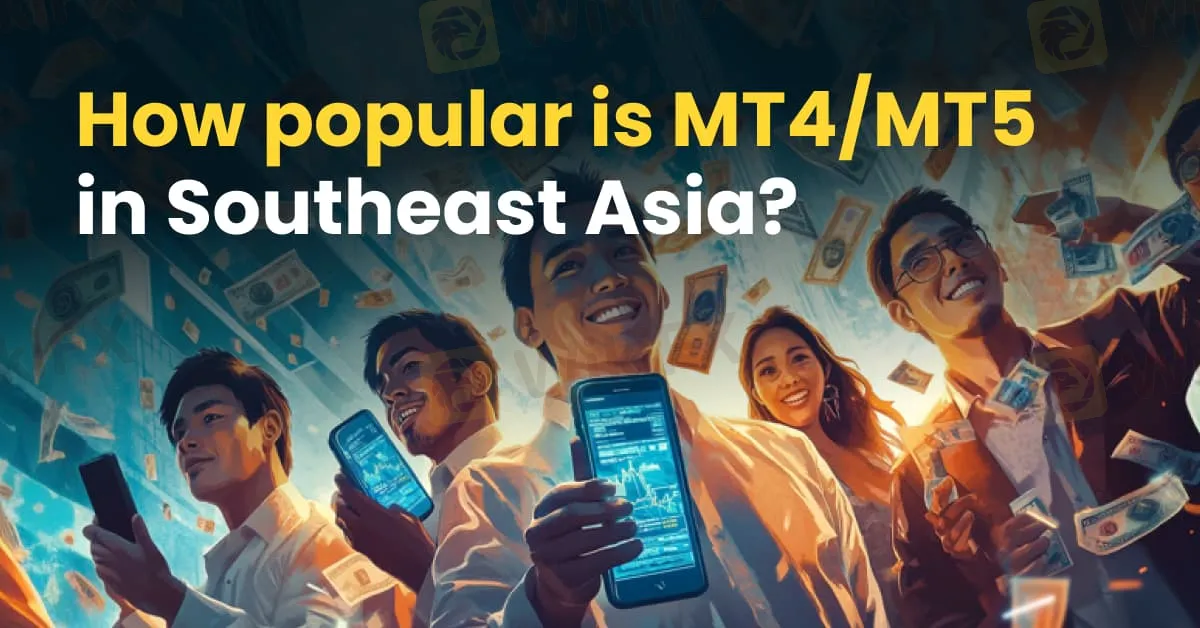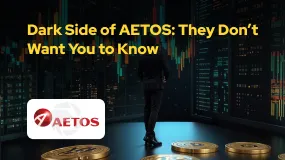简体中文
繁體中文
English
Pусский
日本語
ภาษาไทย
Tiếng Việt
Bahasa Indonesia
Español
हिन्दी
Filippiiniläinen
Français
Deutsch
Português
Türkçe
한국어
العربية
How popular is MT4/MT5 in Southeast Asia?
Abstract:MetaTrader 4 (MT4) and MetaTrader 5 (MT5), developed by MetaQuotes Software, are two of the world’s most widely used retail forex trading platforms. In Southeast Asia—a region home to rapidly growing retail trading communities—both platforms have made significant inroads. This article examines their relative popularity, regional usage patterns, and the factors driving traders’ preferences.

Introduction
MetaTrader 4 (MT4) and MetaTrader 5 (MT5), developed by MetaQuotes Software, are two of the world‘s most widely used retail forex trading platforms. In Southeast Asia—a region home to rapidly growing retail trading communities—both platforms have made significant inroads. This article examines their relative popularity, regional usage patterns, and the factors driving traders’ preferences.
About MT4
- Global & Regional Market Share
MT4 remains the dominant platform for retail FX trading worldwide. Over 90% of forex brokers continue to support MT4 as their primary interface. In Asia, including Southeast Asia, MT4s versatility and vast ecosystem of Expert Advisors (EAs) and custom indicators cement its top position—industry surveys regularly cite MT4 as the most popular choice among traders and brokers alike.
- Broker Adoption in Southeast Asia
Brokers operating in key markets such as Malaysia, Thailand, and Indonesia almost universally offer MT4. For example, top Thai-friendly brokers list MT4 alongside MT5 as standard offerings, underscoring its entrenched status in the region.
- Mobile & Desktop Usage
In Malaysia, 78% of retail forex trades are executed via mobile apps, with MT4s mobile version among the leading choices for on-the-go trading. Its intuitive interface and reliable execution speed make MT4 a go-to for both novice and experienced traders across Southeast Asia.
About MT5
- Global Trading Volume
Though MT4 leads in broker support, MT5 is rapidly gaining ground. A recent industry report shows MT5 now accounts for 54.2% of combined trading volume on MetaTrader platforms, compared to 45.8% for MT4. This shift reflects MT5s enhanced features, such as expanded market depth, more order types, and multi-asset support (including stocks and commodities).
- Regional Roll-out
Southeast Asian brokers are progressively rolling out MT5 to meet evolving trader demands. In markets like Singapore and the Philippines, where multi-asset trading is popular, brokers advertise MT5 as a way to trade not only FX but also indices, shares, and cryptocurrencies using a single interface.
Country Snapshots
- Malaysia
With a mature online-trading infrastructure, Malaysian brokers often support both MT4 and MT5. Retail trading volumes surged by 45% since 2020, primarily on digital platforms like MT4 mobile and MT5 desktop.
- Thailand
Thai brokers typically list MT4/MT5 as “award-winning” third-party platforms. Demo accounts for MT4 are especially common, allowing new traders to test strategies before committing real capital.
- Indonesia & Vietnam
Though comprehensive usage data is scarce, the widespread availability of MT4 among licensed brokers in Indonesia and Vietnam implies high adoption. Local Vietnamese brokers often promote MT4s vast library of free indicators, catering to the large community of technical analysts.
Why Traders Prefer MT4 & MT5
- Extensive Ecosystem (MT4)
- 25,000+ EAs and custom indicators.
- Strong user community offering strategy libraries and support.
- Advanced Functionality (MT5)
- Native multi-asset capability (forex, CFDs, stocks, futures).
- More order types (e.g., buy stop limit, sell stop limit) and timeframes.
- Built-in economic calendar and improved depth-of-market (DOM) tools.
- Broker Support & Regulation
- Southeast Asian regulators such as MAS (Singapore) and SCM (Malaysia) oversee brokers that offer MT4/MT5, ensuring platform integrity and fund safety.
- Low Costs & Accessibility
- Both platforms are free to use; brokers earn via spreads and commissions.
- Lightweight installation and low system requirements facilitate widespread deployment across desktop and mobile.
Future Outlook
- Gradual Transition to MT5
Although MT4‘s dominance is unlikely to wane in the short term, MT5’s momentum suggests a gradual shift. Newer brokers—and those targeting multi-asset traders—are likely to prioritize MT5 on onboarding materials and promotions.
- Potential MT4 Sunset
MetaQuotes has signaled that future innovation will focus on MT5, suggesting that at some point, MT4 support may taper. Brokers in Southeast Asia could then phase in MT5 features, encouraging traders to migrate over time.
Conclusion
MT4 and MT5 both play pivotal roles in Southeast Asia‘s booming retail forex market. MT4’s unparalleled ecosystem and broker ubiquity make it the default choice for many, while MT5s richer feature set and multi-asset capabilities are drawing a growing segment of sophisticated traders. As regional infrastructure and regulatory frameworks continue to evolve, traders can expect both platforms to coexist, each serving distinct needs, before MT5 ultimately takes center stage.
Whether you‘re a beginner exploring MT4’s strategy library or an experienced trader leveraging MT5‘s advanced order types, Southeast Asia’s vibrant trading scene ensures ample opportunities to thrive on both platforms.

Disclaimer:
The views in this article only represent the author's personal views, and do not constitute investment advice on this platform. This platform does not guarantee the accuracy, completeness and timeliness of the information in the article, and will not be liable for any loss caused by the use of or reliance on the information in the article.
Read more

BlackBull: A Closer Look at Its Licenses
When selecting a broker, understanding its regulatory standing is an important part of assessing overall reliability. For traders seeking to protect their capital, ensuring that a platform operates under recognised and stringent oversight can make all the difference. Keep reading to learn more about BlackBull and its licenses.

Dark Side of AETOS: They Don’t Want You to Know
AETOS is an Australia-based broker. All over the internet, you will find positive reviews about this broker, but no one is talking about the risks involved with AETOS. However, we have exposed the hidden risks associated with AETOS

Contemplating Investments in Quotex? Abandon Your Plan Before You Lose All Your Funds
Have you received calls from Quotex executives claiming to offer you returns of over 50% per month? Do you face both deposit and withdrawal issues at this company? Or have you faced a complete scam trading with this forex broker? You're not alone. Here is the exposure story.

15 Brokers FCA Says "Are Operating Illegally" Beware!
If a reputable regulator issues a warning about unlicensed brokers, it's important to take it seriously — whether you're a trader or an investor. Here is a list you can check out- be cautious and avoid getting involved with these scam brokers.
WikiFX Broker
Latest News
Global week ahead: Banking bellwethers and a tariffs waiting game
CNBC Daily Open: Solid earnings beats might mask tariff volatility these two weeks
Mastering Deriv Trading: Strategies and Insights for Successful Deriv Traders
Brexit made businesses abandon the UK. Trump's hefty EU tariffs could bring them back
Jeep-maker Stellantis expects first-half net loss of $2.7 billion as tariffs bite
CNBC Daily Open: The silver lining of positive earnings could be too blinding
BlackBull: A Closer Look at Its Licenses
Top Wall Street analysts are confident about the potential of these 3 stocks
Retirees are fleeing these 10 U.S. cities—most are in states where you need over $1 million to retire
Singapore dollar exhibits safe-haven currency features. But it's no yen or Swiss franc — yet
Currency Calculator


